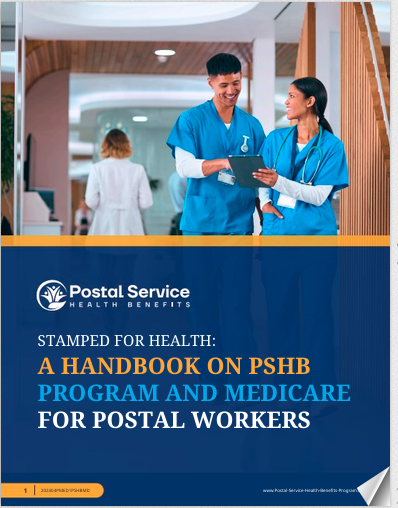Key Takeaways
-
The 2025 changes to PSHB prescription coverage introduce a $2,000 annual out-of-pocket cap for Medicare-eligible enrollees, but this cap only applies under specific plan conditions.
-
Drug costs can still add up quickly if your PSHB plan includes high copayments, deductibles, or doesn’t integrate well with Medicare Part B or Part D.
A New Year, A New Prescription Drug Landscape
With the launch of the Postal Service Health Benefits (PSHB) program in 2025, many postal retirees and workers expected smoother and more affordable prescription drug coverage. While the $2,000 out-of-pocket cap under Medicare Part D is an important improvement for eligible enrollees, it does not mean you’ll automatically save money or pay less each month. Depending on your chosen plan, the medications you take, and your Medicare enrollment status, your actual drug costs may vary—and in some cases, they might still surprise you.
Let’s break down what’s changed, how it works, and what to watch out for in your PSHB drug benefits this year.
Understanding the $2,000 Cap—and Its Limits
If you are enrolled in Medicare and covered by a PSHB plan that includes the Part D Employer Group Waiver Plan (EGWP), you now benefit from a hard cap of $2,000 on your out-of-pocket drug costs in 2025. This is one of the most significant reforms in Medicare’s history, replacing the previous coverage gap (commonly called the “donut hole”).
However, this $2,000 ceiling doesn’t apply universally:
-
It only applies to Medicare-eligible enrollees with PSHB drug coverage tied to a Part D EGWP.
-
You must not opt out of the integrated Medicare prescription drug coverage in your plan.
-
It doesn’t affect you if you’re not Medicare-eligible or if your PSHB plan isn’t fully aligned with Medicare drug benefits.
If you fall outside these categories, your drug costs will be subject to your PSHB plan’s own copayment and coinsurance structure, which can still be substantial.
What You’re Still Paying: Copayments and Coinsurance
While the out-of-pocket cap is welcome, it doesn’t replace everyday cost-sharing mechanisms. You may still be paying:
-
Copayments: A fixed amount per prescription (for example, $20-$60) depending on the drug tier.
-
Coinsurance: A percentage of the drug’s cost, often ranging from 20% to 50% for non-preferred or specialty drugs.
-
Deductibles: Some PSHB plans come with annual drug deductibles, typically up to several hundred dollars, which must be met before full coverage begins.
These costs apply at the pharmacy counter—and if you take multiple medications or need high-cost drugs, your expenses could add up even before you reach that $2,000 threshold.
Generic vs. Brand: The Price Gap Persists
Many PSHB plans encourage the use of generics to help reduce costs, but the savings can vary. Some plans still impose significant copays even for generic drugs, especially if they’re not on the plan’s preferred list.
Additionally, brand-name or specialty drugs can carry high coinsurance rates—even if you’ve already met your plan’s deductible. That’s where cost shock can still happen, particularly in the first few months of the year when deductibles reset.
Pharmacy Networks Matter More Than Ever
Another factor influencing your prescription drug costs in 2025 is pharmacy network participation. Some PSHB plans have preferred pharmacy partners where you’ll pay lower copays. Using an out-of-network or non-preferred pharmacy could mean higher out-of-pocket costs or, in some cases, no coverage at all.
Make sure your plan’s pharmacy network includes:
-
A nearby, convenient pharmacy
-
Coverage for your current prescriptions
-
Access to mail-order service if you rely on maintenance medications
If you haven’t checked your pharmacy network since Open Season, it’s not too late to review the details and make adjustments during the next enrollment period or due to a qualifying life event.
Mail Order Isn’t Always Cheaper
Mail-order prescriptions can be a convenient way to get a 90-day supply, but don’t assume they’ll always save you money. Some PSHB plans offer cost incentives for mail order, while others charge the same as retail pharmacies—or even more.
Check your plan brochure or online portal for the specific costs of:
-
30-day vs. 90-day supplies
-
Maintenance vs. acute medications
-
Mail-order vs. retail pharmacy costs
Being proactive here could prevent unexpected expenses from showing up on your next credit card bill.
What If You Opted Out of Medicare Drug Coverage?
If you’re Medicare-eligible and you opted out of your PSHB plan’s integrated Medicare drug coverage (Part D EGWP), your situation is more complex. In most cases:
-
You’re no longer covered for prescription drugs under your PSHB plan.
-
You may need to obtain standalone Medicare Part D coverage, which typically comes with separate premiums, deductibles, and copays.
-
You’re not eligible for the $2,000 annual cap, unless you enroll in another qualifying Part D plan.
For those who declined Part B or Part D thinking their PSHB plan would cover everything, this has created financial stress in early 2025. If that’s you, speak to a licensed insurance agent listed on this website to explore any available Special Enrollment Periods or solutions.
Extra Help Might Still Be Available
If you have limited income and resources, you might qualify for Medicare’s Extra Help program—which can lower or eliminate your drug costs. In 2025, more beneficiaries qualify due to expanded eligibility thresholds.
Even within PSHB plans, some drug manufacturers or state-run programs may provide assistance for expensive medications. It’s worth exploring options, especially for:
-
Chronic condition medications
-
High-tier specialty drugs
-
Brand-name prescriptions with no generic alternative
You May Not Hit the Cap—But That Doesn’t Mean You’re Saving
Let’s say you don’t take enough medications to reach the $2,000 annual cap. That’s great—but you could still be spending several hundred dollars a year on prescriptions that would otherwise be covered more affordably under a better-fitting plan.
This is especially true for retirees or survivors who:
-
Are on multiple maintenance medications
-
Have seasonal or acute prescriptions throughout the year
-
Use a mix of retail and mail-order options
It’s not just about hitting the ceiling. It’s about minimizing your monthly costs. And that requires reviewing the fine print of your PSHB plan—not just assuming that the $2,000 cap means you’re protected from all surprises.
What to Watch for in Plan Materials
If you haven’t already reviewed your plan’s Summary of Benefits or Evidence of Coverage, now is a good time. Look closely at:
-
Tier structure for generic, preferred brand, non-preferred, and specialty drugs
-
Whether your medications are covered and at what cost
-
Annual deductible and whether it applies to all drug tiers
-
Your access to retail vs. mail-order pharmacies
-
Copayments and coinsurance details
Also, keep an eye out for formulary updates mid-year. Some plans revise their covered drug lists, which could move your medications to a higher tier or exclude them entirely.
Retirees vs. Current Employees: Your Costs May Differ
It’s also important to understand that current USPS employees and annuitants (retirees) may experience different prescription benefits depending on their Medicare status and plan selection.
-
Retirees enrolled in Medicare Part B and the integrated drug coverage typically pay less in out-of-pocket costs.
-
Employees or retirees not eligible for Medicare often face higher copayments or deductibles.
This can affect household budgets significantly, especially when both a retiree and a non-Medicare-eligible spouse are covered under the same plan. Review how your plan calculates family prescription costs if you’re covering dependents.
Get Ready for 2026 and Beyond
The 2025 drug coverage changes are just the beginning. Over the next few years, additional reforms may include:
-
Further price negotiations on high-cost medications
-
Expanded access to biosimilars and generics
-
Even lower out-of-pocket maximums for low-income enrollees
Staying informed during each Open Season—and asking the right questions about your drug benefits—is the best way to ensure you’re not overpaying.
Review Your Drug Coverage with Expert Help
Prescription benefits under PSHB in 2025 are more complex than they first appear. Yes, there’s progress—but that doesn’t guarantee protection from unexpected costs. If you haven’t reviewed your plan details, drug list, and Medicare integration status recently, now’s the time.
To get help reviewing your coverage and exploring other plan options, contact a licensed insurance agent listed on this website. They can walk you through:
-
Whether you’re eligible for the $2,000 drug cap
-
What your real out-of-pocket exposure might be
-
How to adjust your plan if it’s not working for you







